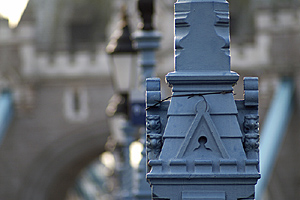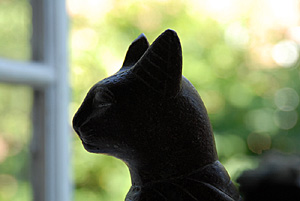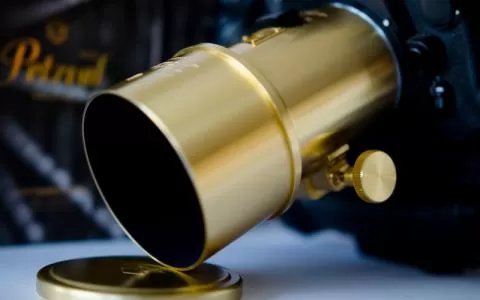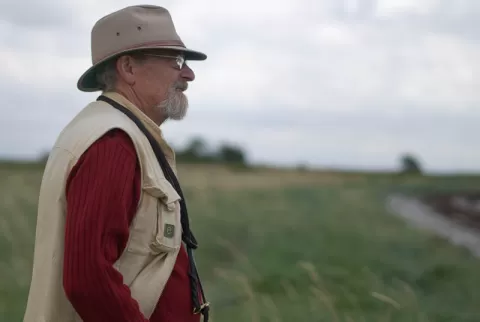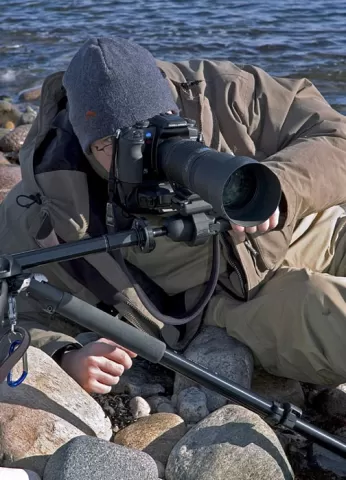Bokeh is a thing I have always known, but only in the recent years have been able to put words on.
Sharpness may be a very important aspect of a lens, and most lenses do a very good job of being sharp. But the best ones do an equally good job of being unsharp. Unsharp in the right places that is. Unsharp in the out-of-focus areas, referred to as bokeh (bo'kay).
Bokeh is a phenomenon you don't really learn to appreciate before you see it in full flower on a good lens. The hallmarks of good bokeh is a very smooth lack of sharpness in the areas in front of and behind the subject in focus. The highlights are the really critical parts of the picture in this regard, but bokeh also applies to the midtones and darker areas. The smoothness is characterized by very soft edges, no visible polygonal shape of the aperture blades and very little stray light. Just a smooth surface with very little definition of the objects that are seen (or rather: not seen).
Good bokeh is achieved through the optical construction of the lens, often combined with curved aperture blades, which make the aperture-hole round and smooth. Bokeh is a thing that is most noticeable on telephoto-lenses and not so much on normal focal lengths and wideangles.
Technical and photographic
The phenomenon of bokeh can be explained in a very technical manner, and many places on the web do so. With the assistance of geometrical drawings, photos of test charts and lots of curves, they describe what happens with the light that passes through the lens.
But I have failed to find anywhere that explains it in photographic terms, and shows the actual difference between bokeh of different lenses on the same subject and with the same settings and focal lengths. I will try to do that here.
The pictures below were taken with the same camera (Dynax 7D) and on the same location within minutes. They were shot with three different lenses at a short telephoto focal length -- 80mm, 70mm and 90mm respectively. This compares to a 135mm on a 35mm film camera when shot on the Minolta DSLR. All lenses were shot at full open aperture, which was f5.6, f2.8 and f2.8. A slight levels adjustment has been done in all three in Photoshop, but apart from that they are just converted from RAW right out of the camera and scaled down from full size with no sharpening applied.
Not good
Cosina 28-80 f3.5-5-6
Look at the image to the right. It's a cat's statue shot in a window in shadow with a fairly bright, sunlit background. The white frame to the left is the open window itself, which is in the sun, and in the background you see bushes, trees and a house.
This particular image was taken with a Cosina 28-80mm f3.5-5-6, which is a standard zoom that comes with many cheap Minolta kits. It's a lightweight, plasticky lens with an optical performance below average.
Notice the unsharp parts of the image. They are fairly well defined and clearly not soft, but all have distinct rings or lines, which indicate some sort of uneven tonal range from their center to their edge. You can even see the shape of the aparture-hole and count the number of blades -- it looks like six in this case, but there are more. I can see that when I look into the lens. But they are unable to give a soft edge even so. Good lenses have up to nine blades or more, often curved to give an even rounder shape to the opening.
Notice that the color saturation of this lens is very nice and gives a juicy appeal to the image. But it does not compensate for the lack of good bokeh.
Good
Sigma EX 24-70mm f2.8
To the right is the same scene, this time recorded with a Sigma EX 24-70 f2.8 at 70mm. Look at the difference! The cat is basically the same, but the background...
This is an example of superior bokeh. There are no strange fringes, no uneven tonal ranges and no artefacts created by aperture blades or the lens construction. The highlights are smooth and soft, most noticeable in the window frame, which in spite of its ridges and grooves, has a very smooth appearance in the picture.
But as you can see by close examination, the aperture blades are just barely visible in the highlights, but counting the number -- nine -- can be difficult in spite of the slightly sharp edges of the spots.
Even better
Sigma 90mm f2.8 macro
The last example is shot a focal lenght, which is slightly longer, namely a 90mm Sigma f2.8 macro. This lens is extremely sharp in the details and still has a beautiful bokeh. It also renders the scene a bit more saturated, and manages the highlights in the background without loosing the color.
The slightly longer focal length helps blurring the background details a bit better than on the above shown pictures, but still the Sigma macro excels in the bokeh game. It also excels in the ability to pick out details in the dark areas on the side of the cat towards us. Notice the details here, which can be seen in spite of the background not being too light or the whole picture being overexposed.
This is one of my aboslute favorite lenses.

[Dynax 7D, Tokina 100-300 f4]
Premium for good bokeh
Most photographers that I know judge lenses primarily by their sharpness. Of course a lens should be sharp. That's a very important aspect of getting the tachnically good image.
But telephoto lenses in particular should also be able to isolate the subjects in focus from the background and forground. This requires good bokeh and good sharpness at full open aperture. Take a look at your own telephoto pictures. Do they display good and soft unsharp areas? If you compare to pictures from professional photographers who shoot sports, wildlife and other subjects, which typically require tele lenses, are they still soft? Most of these guys use top-of-the-line lenses for their job, and that shows.
You usually pay a premium price for good bokeh, but more and more medium-price lenses offer fine bokeh due to good optical constructions and 7 or 9 curved aperture blades.
Post Scriptum
Nikon 18-200mm f3.5-5.6 VR
I acquired the much discussed 18-200mm VR lens after having bought my D200, and event though it does not have the best bokeh, it does a fairly good job.
This is a do-it-all lens, and expencting creamy smooth out-of-focus rendering would be stressing it.
I also bought a Nikon 85mm f1.8 for the D200, and that's a lens that does a really swell bokeh job as you can see from several small galleries on this site:
- A wooden sailboat
- A walk on the harbour
